About Ajmer
Ajmer is the 5th largest city in Rajasthan and is located 135 kilometres west of the state capital Jaipur and 391 km from National capital New Delhi. Ajmer is surrounded by the Aravalli Mountains.
Ajmer (Ajayameru) was founded in the late 7th century A.D. by Dushyant Chauhan. The Chauhan dynasty ruled Ajmer in spite of repeated invasions by Turkic marauders from Central Asia across the north of India. Ajmer was conquered by Muhammad of Ghor, founder of the Delhi Sultanate, in 1193. However, the Chauhan rulers were allowed autonomy upon the payment of a heavy tribute to the conquerors. Ajmer remained subject to Delhi until 1365 when it was captured by the ruler of Mewar. In 1509, control of Ajmer was disputed between the Maharajas of Mewar and Marwar unitil it was conquered by the Marwar in 1532. The city was conquered by the Mughal emperor Akbar in 1559. In the 18th century, control passed to the Marathas.
In 1818 the British forced the Marathas to cede the city for 50,000 rupees whereupon it became part of the province of Ajmer-Merwara, which consisted of the districts of Ajmer and Merwara and were physically separated by the territory of the Rajputana Agency. Ajmer-Merwara was directly administered by the British Raj, by a commissioner who was subordinate to the Governor-General's agent for Rajputana. Ajmer-Merwara remained a province of India until 1950, when it became the Ajmer State. Ajmer state became part of Rajasthan state on 1 November 1956.
Ajmer is surrounded by the Aravalli Mountains. The city is sied on the lower slopes of the Taragarh Hill in the Aravalli Range. It is situated almost in the centre of Rajasthan. To the north of the city is a large artificial lake, called Anasagar with a marble structure known as Baradari. Ajmer is protected from the Thar desert by the massive rocks of Nagpathar range.
Dargah Sharif

The Dargah Sharif of Khwaja Mu'inuddin Chishti is situated at the foot of the Taragarh hill, and consists of several white marble buildings arranged around two courtyards, including a massive gate donated by the Nizam of Hyderabad and the Akbari Mosque, built by the Mughal emperor Shah Jahan. It has been estimated that around 125,000 pilgrims visit the site every day.
Taragarh Fort
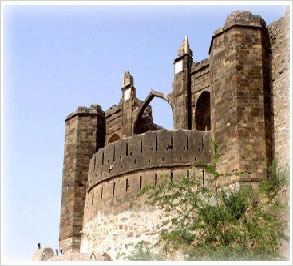
Taragarh Fort, the fort guarding Ajmer, was the seat of the Chauhan rulers. It is reputed to be one of the oldest hill forts in India and the world. It was built by King Ajaypal Chauhan on the summit of Taragarh Hill and overlooks Ajmer. The battlements run along the top of the hill. The walls are two miles (3 km) in circumference and the fort can only be approached by way of a very steep slope.
Akbar's Fort
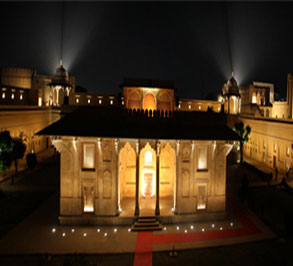
Magazine, the city's Museum, was once the residence of Prince Salim, the son of the Emperor Akbar, and presently houses a collection of Mughal and Rajput armour and sculpture. This is the location from where Salim, as the Emperor Jahangir read out the firman permitting the British East India Company to trade with India. And it is also popularily know as AKBAR'S FORT.
Anasagar Lake
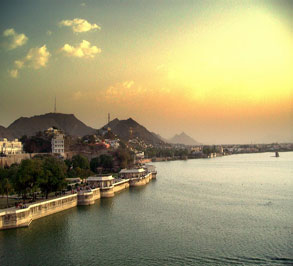
Anasagar Lake, this historic man-made lake was built by Maharaja Anaji (1135-1150 AD). By the lake is the Daulat Bagh, a garden laid out by Emperor Jahangir. Emperor Shah Jahan later added five pavilions, known as the Baradari, between the garden and the lake.
Anasagar Lake is situated only 1.5Km away from the Hotel Cross Lane.
FoySagar Lake
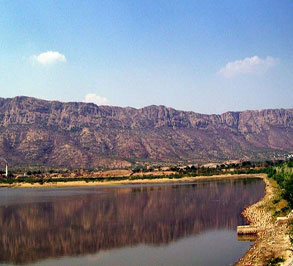
Lake Foy Sagar is situated in the outskirts of the city, it is a picturesque artificial lake that was created as a famine relief project in 1892. It offers panoramic views of the neighbouring Aravalli mountains as well as of the evening flights of nearby birds.
FoySagar Lake is situated only 5 Km away from the Hotel Cross Lane.
Pushkar
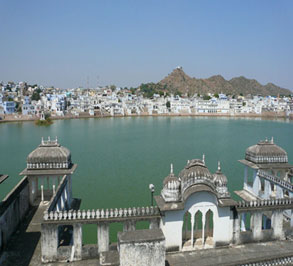
Pushkar is about 11 kilometres from Ajmer and is an important tourist destination. It is famous for Pushkar Lake and the 14th century Brahma Temple at Pushkar, dedicated to Brahma, according to the Padma Purana, Pushkar is the only place where Brahma may be worshipped. Pushkar has 52 bathing ghats and many temples. Pushkar is also famous for its annual Pushkar Fair.
Adhai Din Ka Jhonpara

Adhai Din Ka Jhonpda, a Vaishnava Hindu temple built in 1153 and converted into a mosque by Qutbuddin Aybak in 1193, is situated on the lower slope of Taragarh hill. Aikbak's successor. It is noted for its double-depth calligraphy inscriptions, in the Naskh and Kufic scripts. Forty columns support the roof, but no two are alike and the ornaments are exceptional in their decorations.
Sai Baba Temple
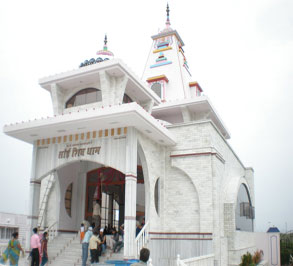
Famous ajmer's sai baba temple. Really a wounderful and peaceful place. Sai Baba temple is constructed by Mr. Suresh K. Lal who is a resident of this Garib Nawaz City, but now he is settled in Koba, Japan. It was inaugurated on 2nd Jan 1999.This Beautiful temple is constructed in Ajay Nagar in a plot of 5 beeghas it is at a distance of 5 kms. from railway station.
Soni ji Ki Nasiyan

Soniji Ki Nasiyan is an architecturally rich Digambara Jain temple. It was built in the late nineteenth century. The main chamber, known as the Swarna Nagari "City of Gold", has several gold-plated wooden figures, depicting several figures in the Jain religion.
Soniji Ki Nasiyan is situated only 0.5 Km away from the Hotel Cross Lane.
Nareli Jain Temple
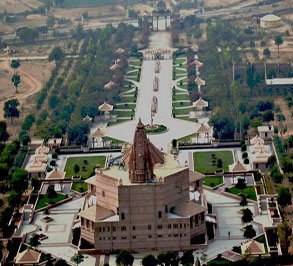
Famous Ajmer's Nareli Jain temple. Really a wounderful and peaceful place. Nareli Jain Temple is a relatively new Jain temple. It is located on the outskirts of Ajmer.
Nareli Jain Temple is situated only 10 Km away from the Hotel Cross Lane.
